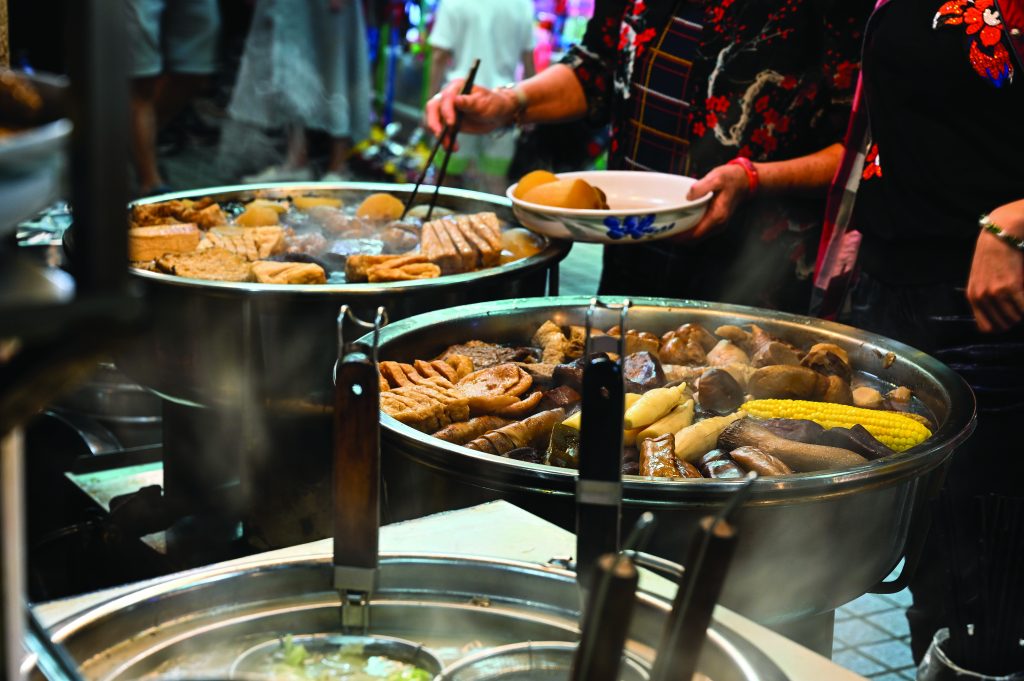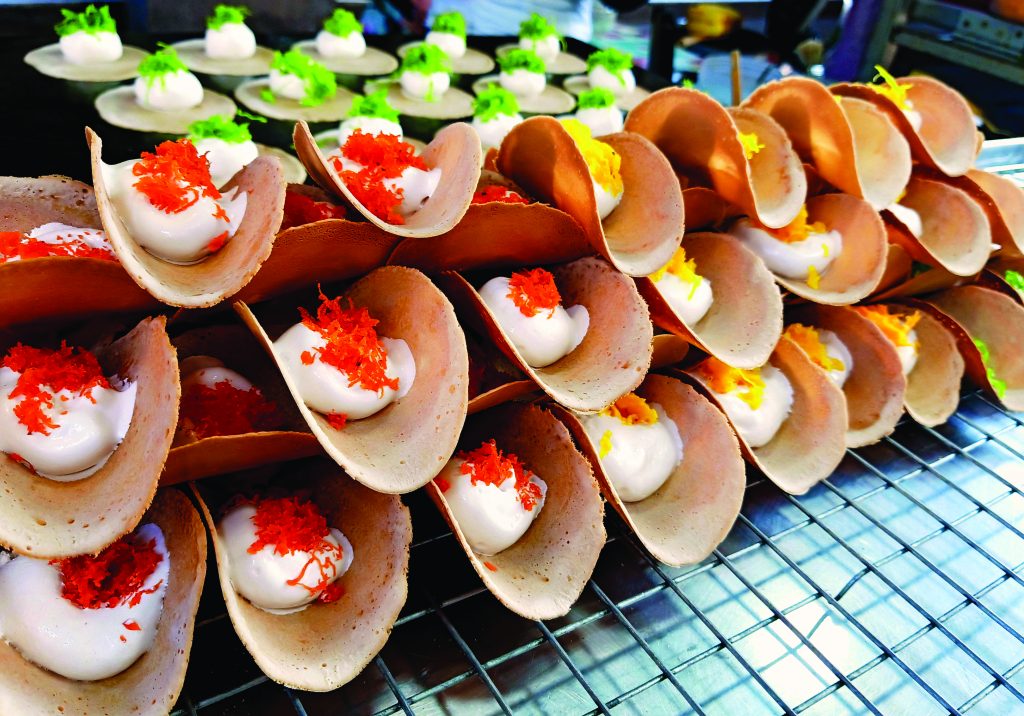Step 1. follow the yellow flags!
By Ashima Sethi
Every year the Vegetarian Festival (the Nine Emperor Gods Festival) falls around late September or October, and is often held over the same dates as Navratri, which means there’s more delicious vegetarian food around the country than any other time of the year. The Vegetarian Festival, also known in Thai as Tesagan Gin Jae, is rooted in Taoist beliefs where people keep a strict jae diet to cleanse spiritually and to bring good luck to themselves and their communities. Sacred rituals are performed at various temples, processions take place in the streets, and many vendors will supply jae food – all you need to do is spot the yellow flags!
Where to go:
The festival is celebrated across Thailand but official festivities take place in Bangkok, Phuket (Old Town becomes a massive walking street and food market), Samut Sakhon, Nakhon Sawan, Pattaya and a few others. In Bangkok, Chinatown is the gathering point for the celebrations so vendors will line the streets of Yaowarat and the surrounding sois to dish up their delicacies.
However, other places worth checking out include Silom Soi 20 (across the Hindu temple) as it has seen several vegetarian places pop up in the past and Thanon Chan, which is also considered a hot spot for jae food during this time. Many malls and food courts will also house pop up markets and vendors serving jae food, so trust me when I say you’ll be spoilt for choice.
Finally, if you’re looking to experience some of the festivities, the communities around Talat Noi have ceremonies to commemorate each of the days. These include religious offerings, parades and processions, and cultural performances.
What to eat:
There is plenty (and I mean PLENTY) to eat during the festival, but here are some Masala Recommended dishes (all of them jae, meaning no animal products):
Jae noodle dishes: You’ll find these nearly everywhere. Whether its smoky vegan Phad see ew, Phad mama with veggies, or light but flavourful Phad mee jae, noodle dishes are a staple dish during the festival.
Curries and stir-fries: Don’t worry, you don’t have to trade up your favourite Thai dishes just because you’re keeping jae. Vendors will have classic dishes cooked using mock chicken, pork, duck, and even seafood. These imitation meats are made from protein substitutes like soy, tofu, beans, and veggies. Examples I’ve had over the years include fragrant Palo jae with lots of tofu, spicy Larb jae with sticky rice, and Gaeng kheaw waan jae!
Jab chai: One of the more traditional dishes served during this period, it’s a flavourful Chinese leafy green soup where cabbage, veggies, turnips, and tomatoes are all boiled down for hours until soft.
Stewed bean curd with tofu: Another traditional Chinese dish, various ingredients and spices are slow cooked over a long time to create a salty, comforting broth.
Gui shy: Steamed dumplings similar to typical dim sum varieties but stuffed with chives or beans instead of meat.
A healthy yet delicious snack if you’re on the go!
Small bites:
If you’re browsing the market and aren’t keen to sit down to have a full meal, there’s plenty of options to snack on. Some of my favourites include:
- Look chin jae (mock meat fish, chicken, and pork balls)
- Popia thod or sot (fried or fresh spring rolls) served with various sauces
- Fried tofu doused in spicy sauce
- Moreish and crunchy Corn fritters
- Guay teaw lord jae with black soy sauce (steamed rice noodles)
- Ewkuay, savoury dumplings shaped like little balloons that are filled with various ingredients
- Takoyaki jae, Japanese-inspired stuffed dough balls
And for dessert:
Khao lam– sweet sticky rice that’s made by stuffing bamboo tubes with sticky rice, sugar, coconut milk, and beans. A more refreshing snack than you’d realise
Kanom dok jok– delicately fried lotus biscuits that come in flavours like coconut and black and white sesame
Kanom buang– a popular snack that’s not usually vegan, they’re crispy mini crepes with both savoury and sweet fillings topped with coconut
Kanom tup tap– a peanut-based snack that’s named after the pounding sounds made while flattening them out
Pro tip:
If you’re keeping jae during this time and don’t have the time to find a good spot to eat, you’ll be happy to hear that 7-11 always stocks jae-friendly food boxes and jae versions of their baked goods, including a killer Pad kraphao made with vegan protein!










